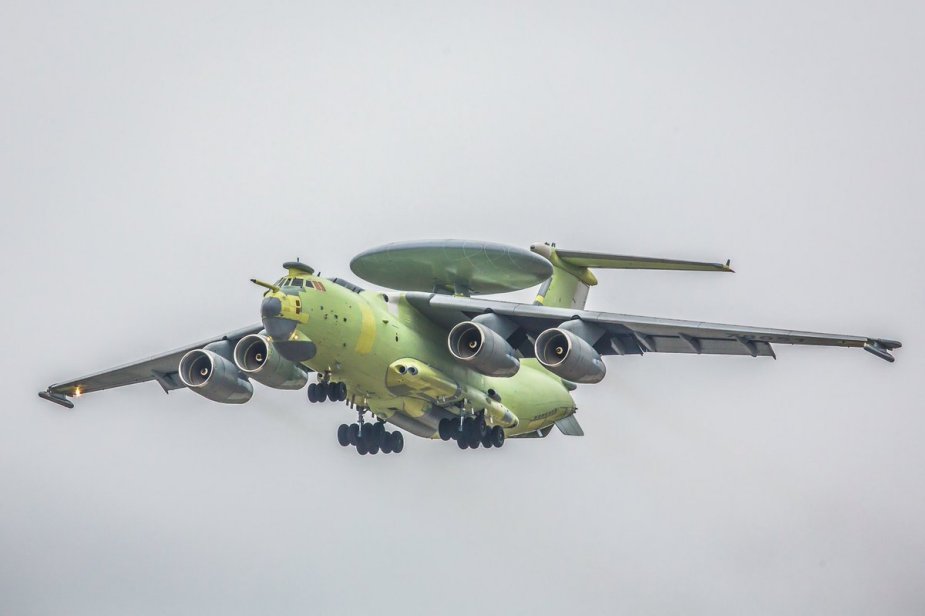Russia's A-100 airborne early warning (AEW) aircraft made its second flight during trials and all systems operated normally. The aircraft is created by a group of enterprises led by Vega Concern and the Beriev aircraft plant, Rostec State Corporation said.
 The A-100 AEW prototype performing maiden flight in November, 2017
The A-100 AEW prototype performing maiden flight in November, 2017
(Credit: UAC)
The flight tested aerodynamic characteristics and avionics. The aircraft properly performed at all flight regimes. The engines performed according to assigned parameters and are ready for further trials.
A-100 was designed on the basis of Il-76MD-90A. It can quickly mount the radar field in the operational direction. A-100 can detect and track air targets, control fighter jets and attack aircraft and aim them at air, ground and sea targets.
"The new generation of flying radars uses the advanced fundamental research in location and information technologies. A-100 uses technical solutions based on modern electronic components, highly productive computing systems, and the latest achievements of domestic radio electronics. It concerns both the obtaining of information, its processing and automatic workplaces of the operators," Vega Chief Designer Vladimir Verba said.
"The ongoing work aims at making A-100 flight characteristics superior to Russian and foreign analogues," he said.
The A-100 is a multifunction airborne intelligence, surveillance, reconnaissance (ISR), warning and control system. Essentially, it is an airborne headquarters using automated control systems to control friendly aircraft and air defense systems, designate targets for them and protect itself and nearby friendly planes by means of electronic countermeasures. The exact characteristics of the aircraft remain classified, but it is supposed to acquire enemy fighters at a range of more than 600 km and enemy ships at 400 km.
The A-100 is a rather classified program, but presumably, its radar relies on a unique technology, with the antenna array comprising small solid-state microwave elements and each element being dual-hatted as transmitter and receiver, expert Alexei Leonkov says. The solution both extends aerial and surface target acquisition range and boosts positioning accuracy by several times. Simply put, present-generation Russian and US AEW&C planes gauge a target’s coordinates using only the X and Y axes and calculating the target’s flight altitude - the Z axis - mathematically. The A-100 will measure the target’s coordinates by means of the three axes at once and, therefore, interceptors and air defense systems will not have to gauge the target’s coordinates in a more accurate manner - just launch their missiles.
© Copyright 2018 TASS. All rights reserved. This material may not be published, broadcast, rewritten or redistributed.
















